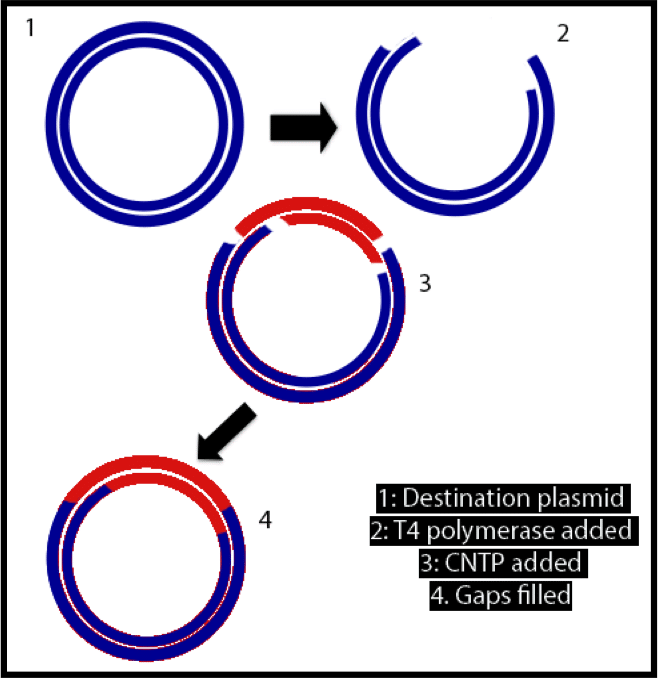microRNA (miRNA) is leading the way as circulating biomarkers in disease biomarker discovery. The hype around circulating miRNA is warranted. They meet many criteria for a good biomarker—namely, stability in circulation and varying levels in certain pathological conditions. Recently, studies have shown that miRNAs could be useful markers for cancer, myocardial infarction, atherosclerosis, and neuro-degenerative diseases.
This series of articles aims to provide you the best advice for extracting circulating microRNA from blood. However, you must consider some important factors to consider before even starting the process. This article will cover the preanalytical phase. Our next article will delve a bit deeper and describe the advantages and disadvantages of different methods for microRNA extraction.
Stronger in Complexes: Circulating microRNAs
miRNAs are not found isolated in the blood. Instead, they circulate in complexes with Argonaute2 protein, lipoproteins, or within extracellular vesicles. These interactions explains their stability within the circulation. However, sample collection and preparation can effect the make up of these complexes—and thereby your choice of extraction method. Below are 6 important points to consider in sample collection and blood processing.
1. Choosing Between Serum or Plasma
Researchers isolate miRNA from both serum and plasma. However, serum is taken after blood clotting, which can result in some differences in the specific content of microRNA. These differences in miRNA content is due to release the of miRNA from platelets during their activation. Many studies, though, do not find significant differences between serum and plasma miRNA composition. Still, higher concentrations of miRNAs are consistently detected in sera.
2. Fasting Conditions
Should you draw blood from your patients before or after breakfast? Yes, food intake may influence the miRNA levels in the blood. Remember that miRNAs are carried in the circulation by high density lipoproteins (HDLs), among other particles. A patient can increase the amount of lipoproteins in the circulation just by eating. This may then have an influence on the efficiency of miRNA recovery. Just to be sure, do any blood draws (phlebotomy) before the patient eats (preprandial).
3. Controlling for Hemolysis
Rupture erythrocytes (hemolysis) can leak miRNAs into the circulation and might alter miRNA levels or the composition of the miRNome. For example, ruptured erythrocytes can release miRNA, which is especially problematic, because it is often used as an endogenous control. Apart from changing the miRNA levels, hemolysis also causes the release of hemoglobin and lactoferrin. Both compunds negatively influence PCR reactions.
The first, and best way, to minimize hemolysis is to work with a well-experienced phlebotomist. Next, carefully select the correct conditions for sample storage and transport. For example, do not freeze the samples upon blood draw—rather keep them in the fridge before processing. Also, avoid vigorous mixing of the tubes (because this can also cause hemolysis).
Even with all of the precautions above, it is hard to avoid some lysis of erythrocytes. So, you should always perform a hemolysis test. Exclude any samples that do not pass this test. A very simple hemolysis test is the Harboe direct spectrophotometric method. This involves a 3-point absorbance measurement at wavelengths of 415, 380, and 450 nm. A more complicated, but more sensitive test, is the measurement of miRNAs as haemolysis indicators, such as the miRNA-451a to miRNA-23a-3p ratio.
4. Checking Blood Cell Counts
The peripheral blood cell count also complicates miRNA profiling from blood. An increase in the number of platelets that get activated during venipuncture can mess with the miRnome. Also, even if you’ve taken precautions to avoid hemolysis, erythrocytes can release some miRNAs during longer storage periods. Unfortunately, there is little you can do about it if you are not in a position to exclude samples with higher blood cell counts. Make sure, however, to have these data so you can explain any odd results in case they appear.
5. Using the Appropriate Tubes
There are a number of different tubes you can use to collect blood. These differ in the content of conservation medium and anticoagulant. So which ones do you use?
This decision depends on two things: (1) the timeline of your blood processing and (2) whether you use serum or plasma.
If you cannot process the samples immediately, you must use tubes that have an RNA conservation medium. This will protect the miRNA from degradation. Such tubes enable the storage of whole blood samples for several days in the refrigerator. If you can process the samples within a few hours (careful not to wait more than 6 hours!), then you can use regular tubes.
Next, you still need to decide if you want tubes with or without anticoagulant. This, of course, depends on whether you collect serum or plasma.
As you might expect, not all anticoagulants are appropriate. For example, heparin inhibits the activity of reverse transcriptase and polymerase. Citrate can dilute plasma, which causes hemolysis because of hypotonicity. It also interferes with any downstream PCR applications. The best choice for an anticoagulant is EDTA because it is less likely to interfere with downstream PCR applications or cause hemolysis.
6. Storage Conditions
Finally, you are ready to store your samples! (Ok, first, you must remove the blood cells from plasma or blood clots from serum. And do another spin at 2500 g for 15 mins to get rid of the remaining platelets in your plasma. But after that, you’re ready!)
Yes! That means you do not have to stay in the lab until the wee hours of the morning to do the RNA extraction. You can aliquot and store your samples at -80°C. Reassuringly, according to most studies, freezing and thawing of miRNA does not affect the stability and recovery of miRNAs.
Isolation Methods for Extracting Circulating microRNA
Generally, there are two different approaches for microRNA isolation. The first of these is organic, liquid-liquid. The total RNA extraction method employs phenol/chloroform isolation with guanidine isotiocyanate as a denaturant. The second is column-based solid phase extraction methods that can be modified to catch only small microRNAs. That being said, the column-based methods often employ organic extraction as a separation step.
Organic Extraction
One usually does organic extraction using Trizol/Qiazol commercial reagents. A specific Trizol reagent is designed for liquid samples. The basic difference is in the concentration of the components. The procedure accommodates the larger volumes that one typically uses for liquid samples (usually around 200 µl of serum/plasma). However, if you happen to have a full stock of regular Trizol, it works quite well to just increase the volume of the reagent. In particular, the ratio should be around 1:5, sample to reagent. Some authors recommend even higher ratios, such as 1:10, to ensure proper denaturation of proteins.
Advantages of Organic Extraction Methods for miRNA
Organic extraction is not expensive. Also, you get a higher yield of RNA and lower inter-assay variability. Furthermore, you can store samples in Trizol if you don’t have enough time to process them. Some authors even recommend this to help completely denature the proteins in the plasma. Trizol is also a good option for samples with category A pathogens. These must be inactivated using guanidinium and phenol solutions.
What Carrier Should You Use for Extracting miRNAs?
It’s a good idea to use a carrier for precipitating microRNAs. Researchers have conflicting opinions about the use of tRNAs and MS2 phage RNA for this purpose. Some authors consider these to be responsible for nonspecific hybridization or amplification in downstream applications. Therefore, a safer option is to use glycogen as co-precipitant. Glycogen is free of biological contaminants and does not interfere with PCR.
Precipitation Time
A special recommendation for miRNA isolation with Trizol is in the precipitation step. You should increase the precipitation step to overnight at -20°C. Some studies recommend that following this step that a higher speed and longer time should be used for pelleting the RNA (16k – 20k g, for 1h). So, add the carrier and the isopropanol. Then, store the samples in the freezer to increase the chances for small RNAs precipitating.
Disadvantages of Organic miRNA Extraction
The biggest problem with Trizol is the purity of the sample when you measure its A260/230 ratio. Phenol/chloroform extraction leaves the samples with organic solvent (phenol, guanidine isotyocyanate) contaminants. These can inhibit PCR. Given the small amount of miRNAs in circulation, this contamination may have a significant influence.
Column-Based Methods
Because of the contamination issues with organic extraction, and the fact that it is a time consuming technique, column-based methods are a great alternative.
A large number of commercial kits use a phenol/guanidine step for separating RNA from the rest of the material. A second step purifies the RNA through glass-fibre or silica-membrane filters. This results in greater purity of the sample than just using organic extraction alone. There are also kits that completely avoid this separation step. They use proprietary lysis buffers and resins to extract the RNA instead.
Advantages of Column-Based miRNA Extraction Methods
Column methods are very fast, which makes them a favorite. MicroRNAs are recovered in solid amounts and ran through columns to clean them up. So, even if the extraction includes an organic separation step, the final sample is free of organic contaminants. Studies show that you can isolate a larger variety of miRNAs using solid phase extraction. So, if your main goal is to profile the microRNAs in the sample, columns are way better way to go. Reproducibility, is also better. So that’s another plus for solid phase extraction!
Small miRNA enrichment
Some commercial kits have an option to use a modified step for isolating small microRNA. These include a stepwise increase in the amount of alcohol used for precipitation. However, if you are working on profiling microRNA, it is better to isolate total RNA. That way you can critically evaluate RNA quality and quantity to see if the sample is suitable for downstream microarray analysis.
Disadvantages of Column-Based miRNA Extraction Methods
The most obvious disadvantage of column methods is their higher price in comparison to liquid extraction. Most researchers also complain they get lower yields and the variability between samples is higher.
Furthermore, columns can clog when using larger volumes of the starting material (over 200 µl). Proteins or particle debris are the main culprits for this. Another issue is the capacity of the membranes, which can sometimes be suboptimal. This is because they tend to saturate with larger RNA species. So be careful with the amounts of starting material.
You will need a need a specific kit for isolation if you are collecting the blood in tubes with conservation medium. This is because these systems are designed for each other.
Quick Tips for miRNA Extraction Methods
Because a bunch of recommendations and opinions are found in these two articles on circulating micro RNA extraction, here’s the short take-home points:
- Sample preparation is super important: use pre-prandial blood, check for haemolysis and check for the platelets/erythrocytes count.
- Use EDTA anticoagulants if you process the blood immediately. Use conservation tubes if samples need to be stored for a few days.
- Freeze aliquots of serum/plasma at -80°C; feel free to freeze/thaw several times.
- Use organic extraction if you are measuring a defined set of miRNAs due to higher yields, but opt for kits if doing profiling.
- Report all the details of sample collection and preparation in the papers.
- And, as usual, whichever protocol you use, stick to it, and process the samples in the same way!
We encourage you to write your experiences in the comments section since this is an underexplored field. Any piece of advice or experience will be very useful for all of us!
Good luck!







